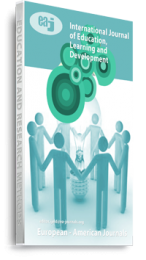The study investigated the Comparative Analysis of Budgetary Allocation to Education and Life Expectancy in Nigerian from 1980-2015. The objective of the study was to comparatively analyze the relative impact of federal government actual budgetary allocation to education alongside UNESCO 26% recommended budgetary allocation to education. In respect to the above, relevant theoretical and empirical literature were reviewed. The researcher formulated the relevant objective research question hypothesis to guide the study. In the course of the study, relevant data relating to the variables needed by the researcher were extracted from various document analysis such as Central Bank of Nigeria (CBN) Statistical Bulletin and National Bureau of Statistics (NBS) Statistical Bulletin. The Classical Linear Regression Model was employed in modelling the relationship between poverty and the budgetary allocation variables. The Ordinary Least Square (OLS) equation technique was used in analyzing the data. The unit root analysis revealed that all the variables were not stationary at levels. But at first difference, all the variables became stationary. The Johansen cointegration analysis revealed that the variables were cointegrated and had a valid error correction mechanism. The analysis of the Error Correction Mechanism (ECM) showed that the impact on poverty was wrongly signed and insignificant. On comparative analysis, the researcher observed that the UNESCO’s 26% recommended budgetary allocation to education criteria had more impact on Life Expectancy. It was therefore, recommended that Budgetary allocation to the educational sector in Nigeria should be implemented based on the UNESCO 26% recommended principle. Greater percentage of the budgetary allocation to education should be spent on capital project in the education sector. This is because such expenditure will impact positively on the educational sector and in turn have a multiplier effect on the general performance of the economy at the long run.
Keywords: Budgetary Allocation, Comparative Analysis, Education, Health, UNESCO 26%, life expectancy

